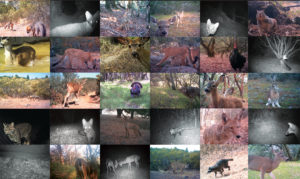San Francisco’s plan to install artificial grass in athletic fields on the western edge of Golden Gate Park has environmentalists worried about the loss of wildlife habitat.
In a hearing scheduled for today, December 1, the city planning commission is taking public comments on a proposal to tear up 9 acres at the Beach Chalet Athletic Fields as part of a renovation project to triple the site’s yearly recreational use.
Although playing fields may not seem like an ecological oasis, Golden Gate Audubon’s conservation director Michael Lynes says it functions as foraging grasslands for many bird species. Artificial grass, also known as “artificial turfgrass,” as well as new stadium lighting proposed for the site, would drive away birds with few other places to go, he said.
“Turf is the ecological equivalent of putting a parking lot out there,” Lynes said. “You might as well pave it.”
The city’s plans have generated wider outrage among groups worried about everything from knee and ankle injuries to exposure to toxic contaminants from the fake grass, made of recycled tires and other materials. City officials maintain that the renovations are needed to meet the city’s need for recreational space, and that turfgrass would cut costs, since it requires little maintenance and watering.
The Beach Chalet Athletic Fields are one of only three primary ground sports athletic facilities city-wide, and it’s currently closed every Monday and 3-4 months of the year during the wet season to allow for the re-growth of the natural grass.
In the project’s draft environmental impact report, the city acknowledges the renovations could affect raptors, migratory birds, and bats through the loss of foraging and nesting opportunities, cover, and disturbances from nighttime lighting and ambient noise. But it concludes that the potential problems for wildlife are “less than significant with mitigation.”
The report states that the loss of grassland habitat represents 0.03 percent of some 2,650 acres of similar grassland habitat within a 5-acre radius of the site. The city will also replace the lost trees and vegetation. Past projects have already caused “substantial” adverse impacts, the report states, noting that the area was originally sand dunes a century ago and what’s developed since is a “new normal in terms of habitat.”
Lynes said that some of the grassland habitat the city cites is a nearby golf course and polo field, and there’s been “no assessment of whether those habitats are equivalent” to the Beach Chalet fields, which are comparatively undisturbed.
Among the species that use the Beach Chalet are dark eyed junco, white crowned sparrows, hummingbirds, fly catchers, red-shouldered hawks and the rare Hutton’s vireo, he said. The grassy fields, as they are now, host a variety of insect, worms, and small mammal species that the birds consume; the turfgrass would create a desert.
Perhaps most troubling, Lynes said, is that the city is violating its own vision for the western end of Golden Gate Park. The Golden Gate Park master plan states that the western part of the park should be kept more wild and sylvan, compared to a more urbanized eastern end.
“This is a complete disregard for that ethic,” Lynes said. “For San Francisco, which tries to tout itself as being the greenest city in America, I don’t know how they can in good conscience make that decision.”
No decision will be made at the hearing. The public has until December 12 to comment on the draft environmental impact statement.
Written comment should be directed to: Environmental Review Officer, Beach Chalet Fields Renovation, San Francisco Planning Department, 1650 Mission Street, Suite 400 San Francisco, CA 94103

.jpg)



